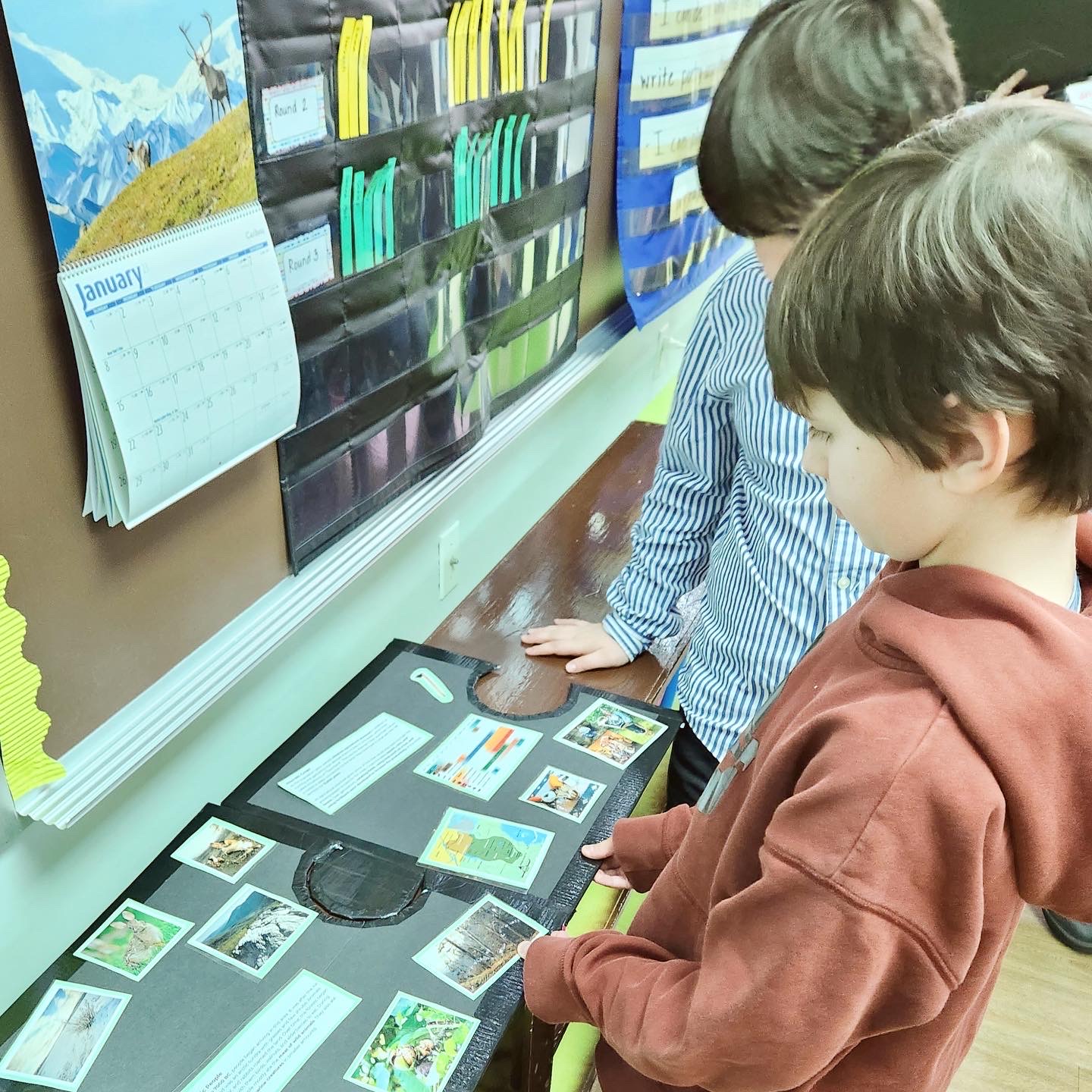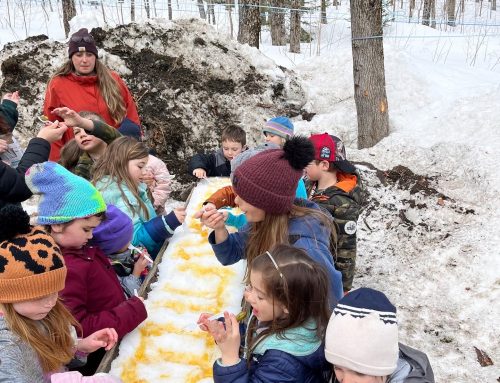By Rose Lovett
How has Vermont agriculture changed and remained the same over time? How has agriculture changed the landscape of Vermont? Who has changed agriculture and the landscape? These are the guiding questions in our Farm-to-School “VT Agriculture: Pieces of History” lesson for third and fourth graders deepen their knowledge of the evolution of our region and its food systems.
This year, our AmeriCorps Farm-to-School Coordinator, Rylin Brett, updated the lesson to include an engaging timeline activity where students work as teams to piece together different eras in chronological order. The different eras covered include Paleolithic, Abenaki (before contact with European settlers), European colonization, when forests were cleared for sheep grazing, industrial agriculture, the organic movement, regenerative and small-scale agriculture, and the future of agriculture in Vermont. At the end of the lesson, students read through the pictures and descriptions as a group to get a better picture of how Vermont’s environmental, social, and economic environment has evolved. There are many talking points that the teachers in the room can delve deeper into with students based on the questions they had about the diversity of pictures on each puzzle piece. Students are also encouraged to share about their own experiences with agriculture and their thoughts about Vermont’s agricultural history.
Students are always surprised to learn that by the 1800s the state had mostly been deforested and converted to pastureland for raising sheep. In the 1830’s and 1840’s especially, Vermont farmers started buying a lot of sheep because they were able to sell wool at a high price. This time is referred to as the Merino Wool Craze. Later on, it would take reforestation efforts to bring back Vermont forests as we know them today. The students also took to heart the final piece in the timeline when we looked to the future and discussed the changing climate. They were upset to hear that due to temperature changes, in our near future maple sugaring may be restricted to Canada, as well as other culturally important aspects of Vermont’s identity like skiing.
In exploring the history of agriculture, students gain an appreciation for how what we do today affects future generations and are able to place themselves within a bigger story of the state they call home.








